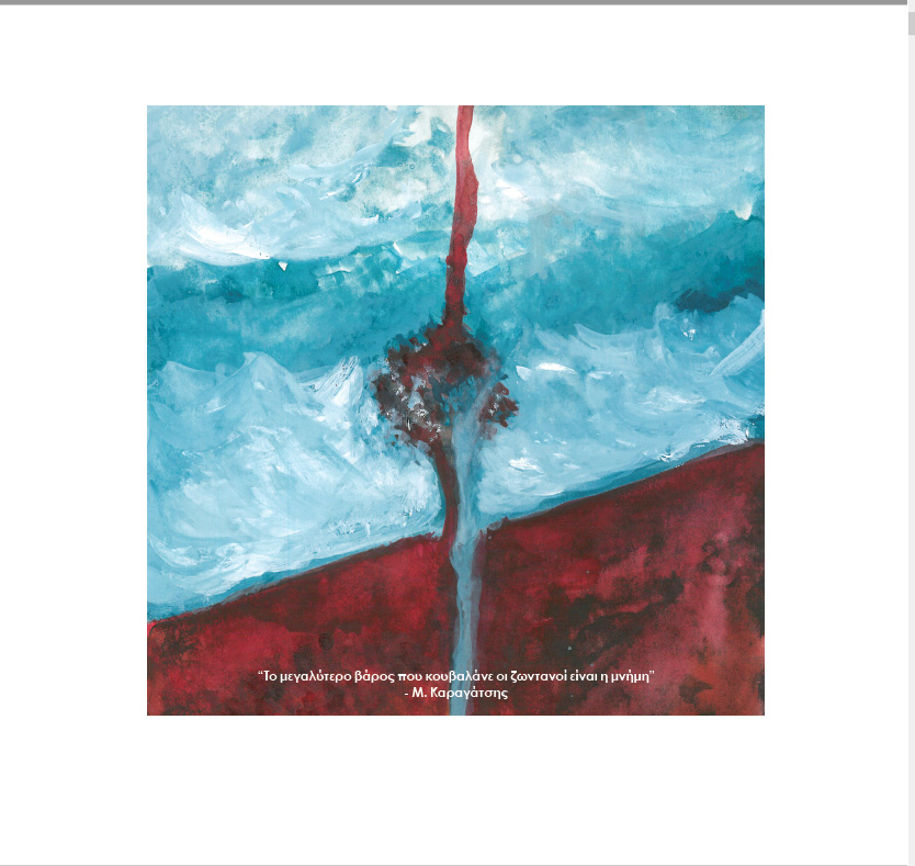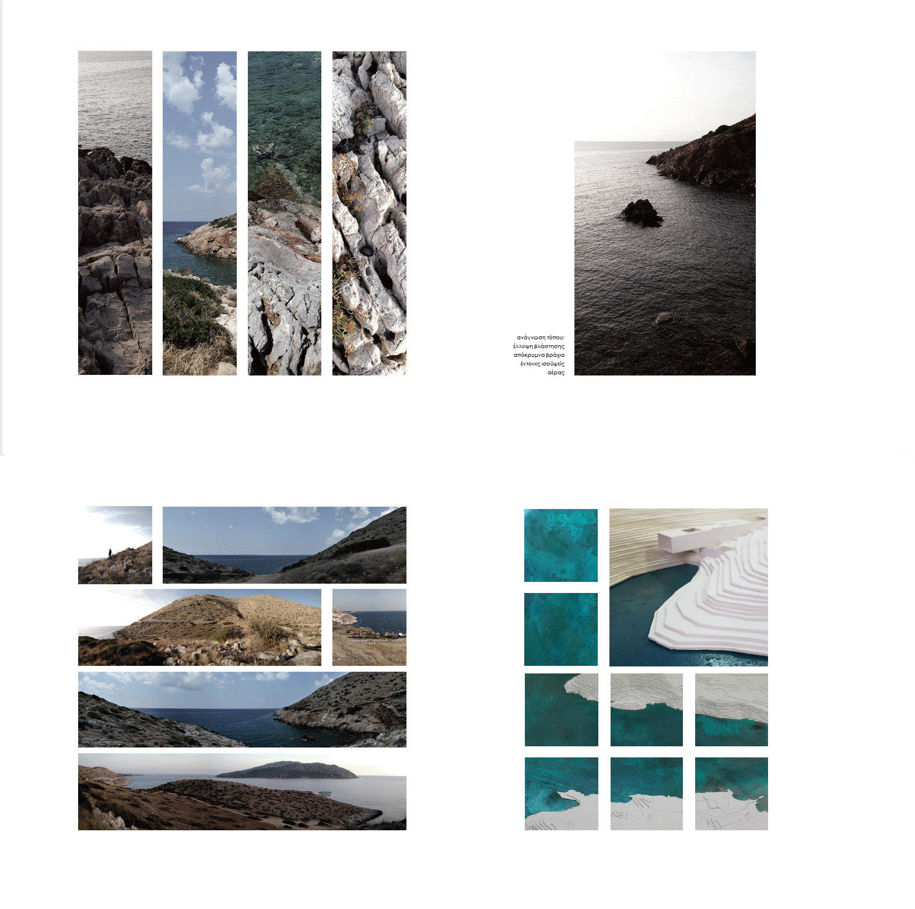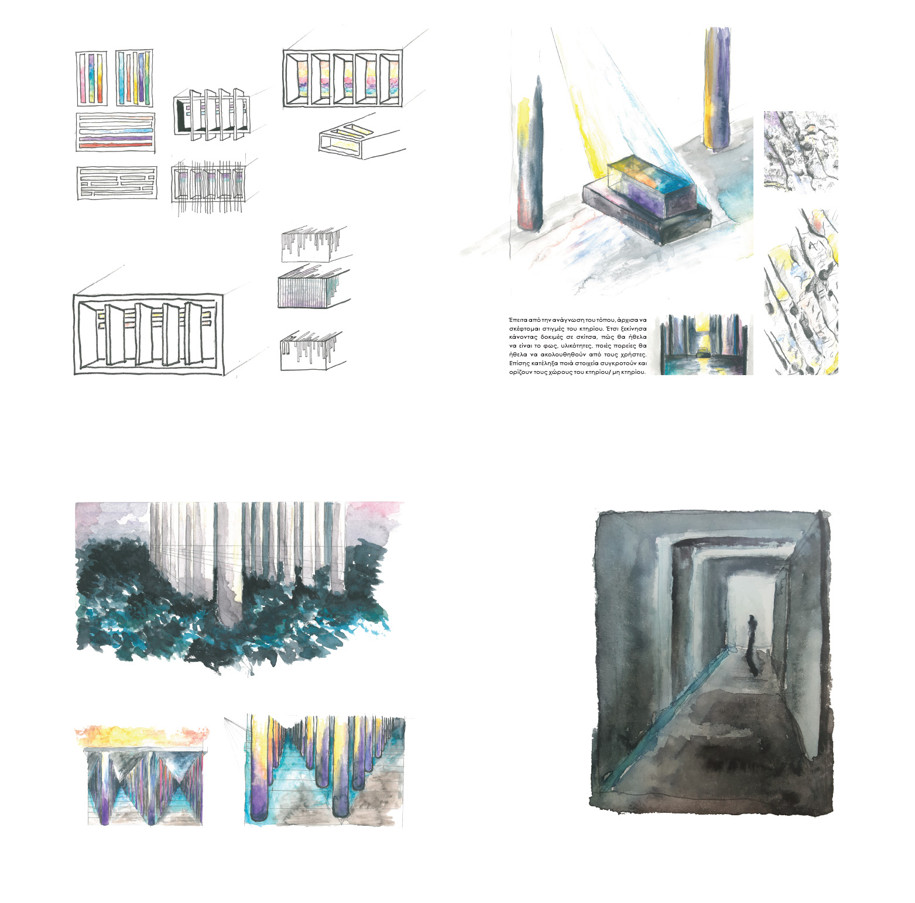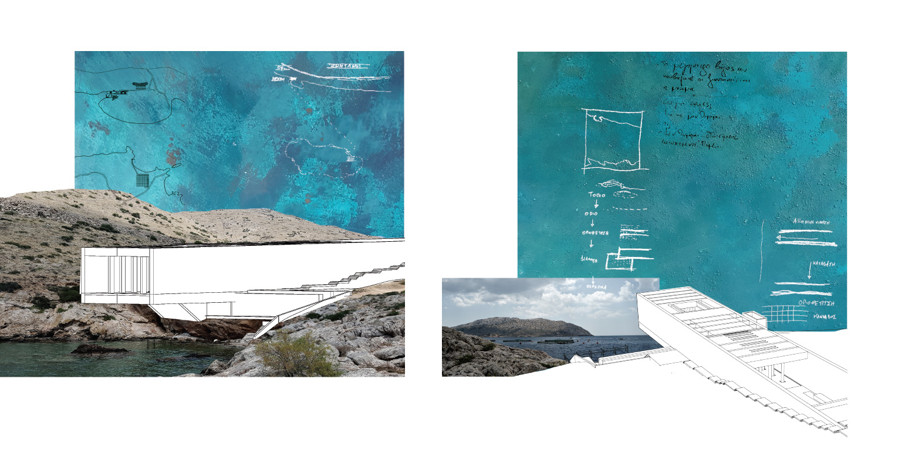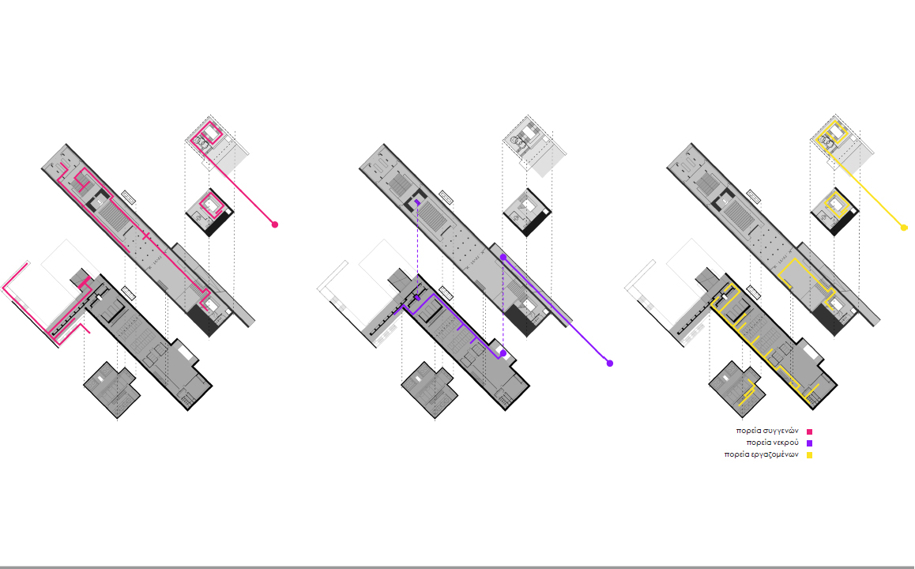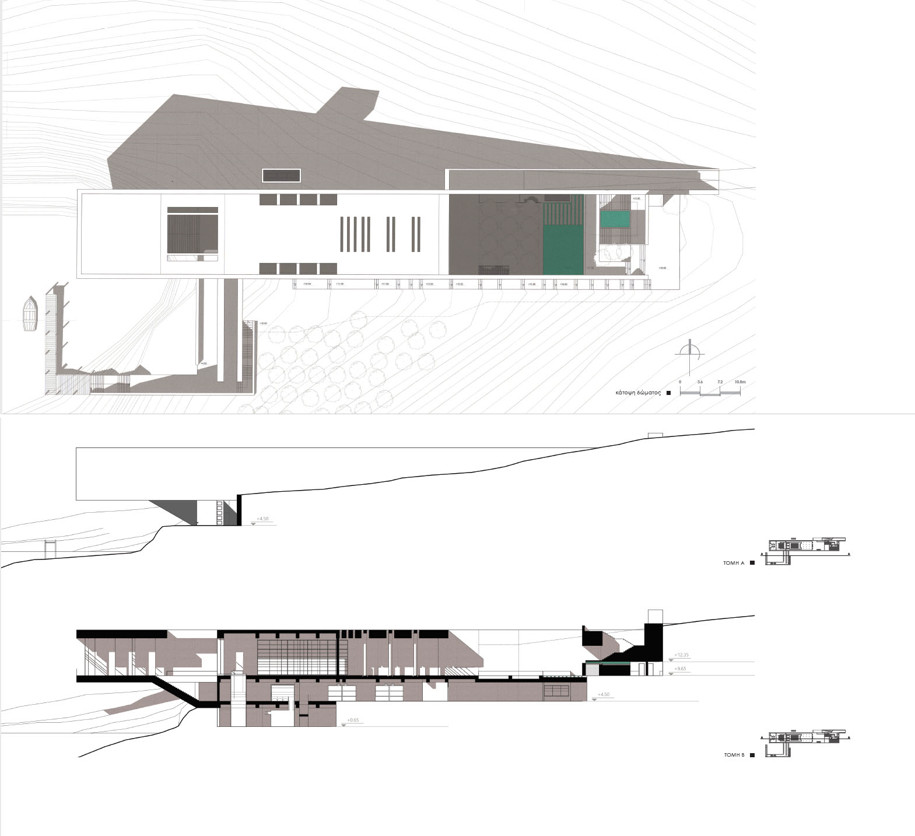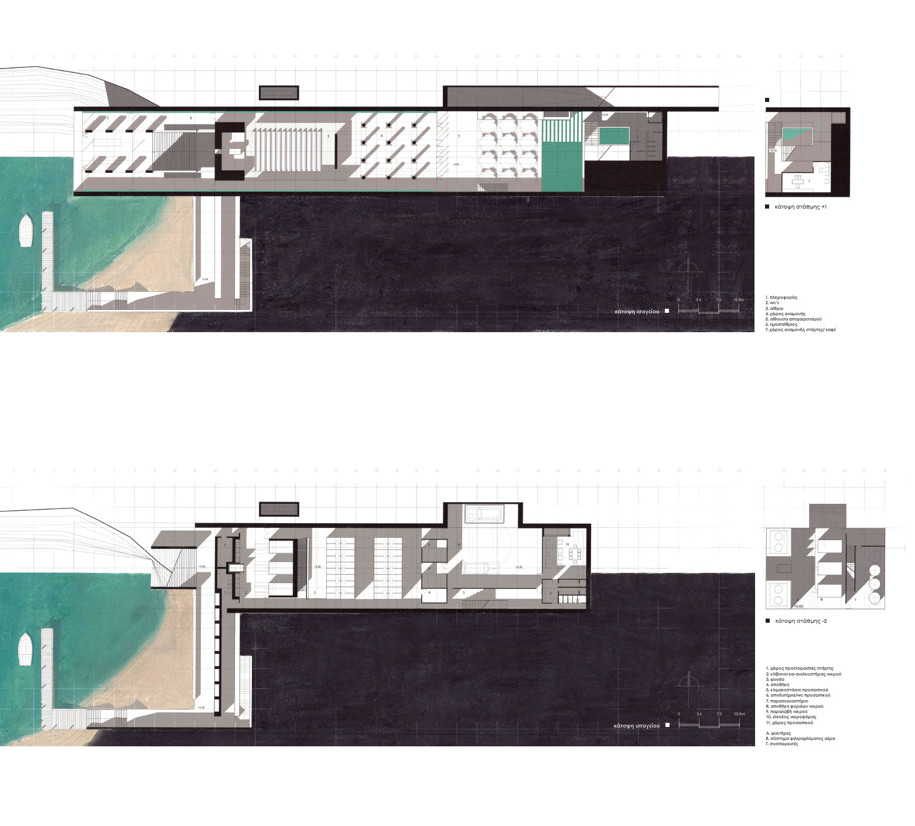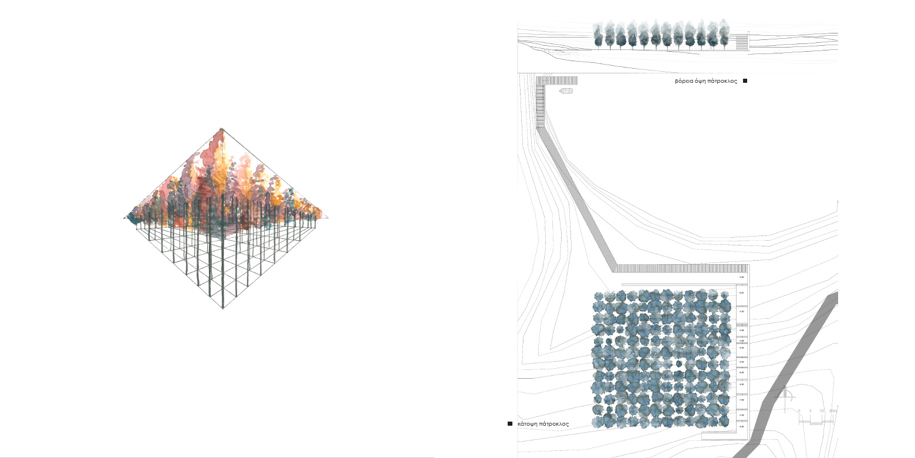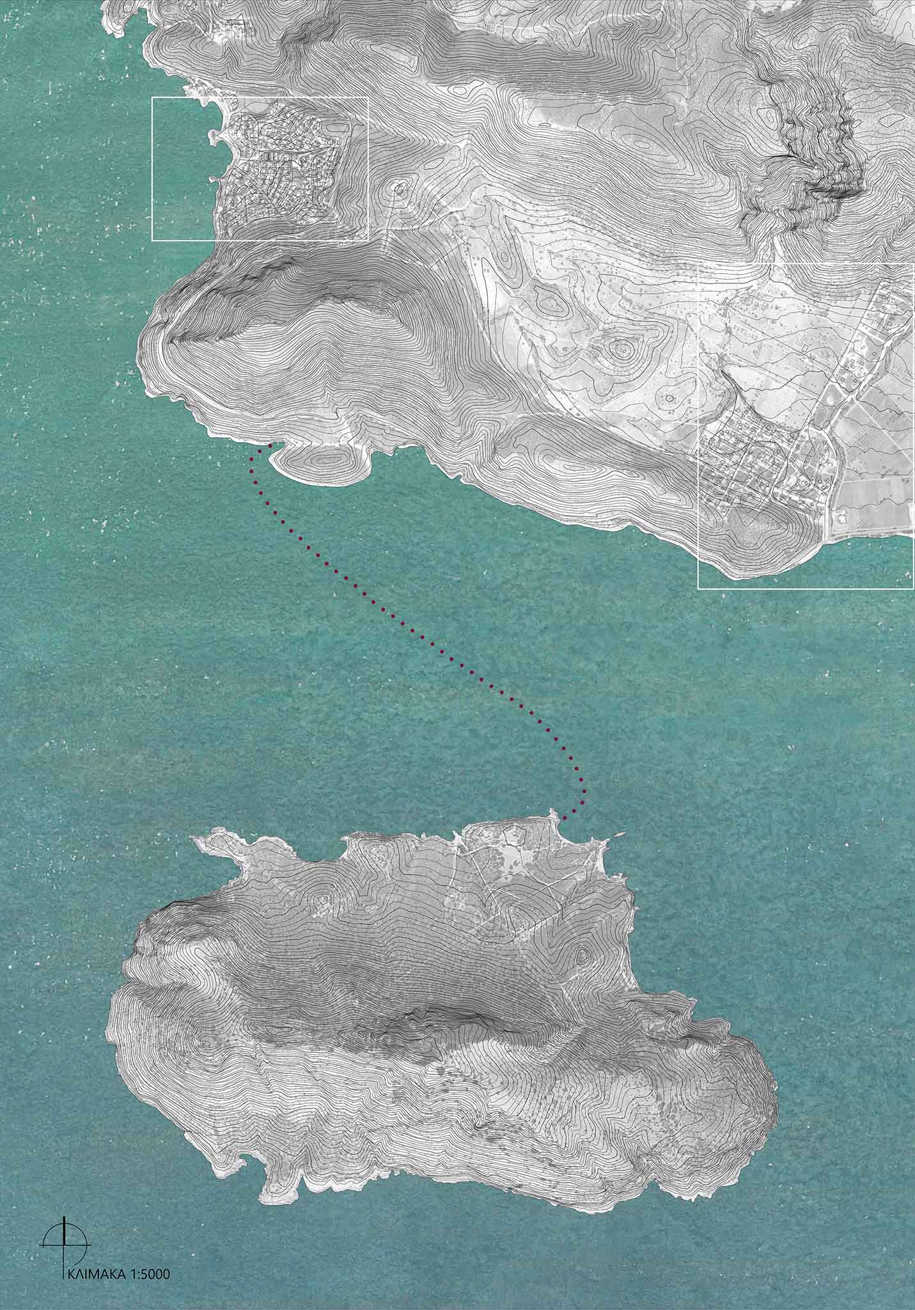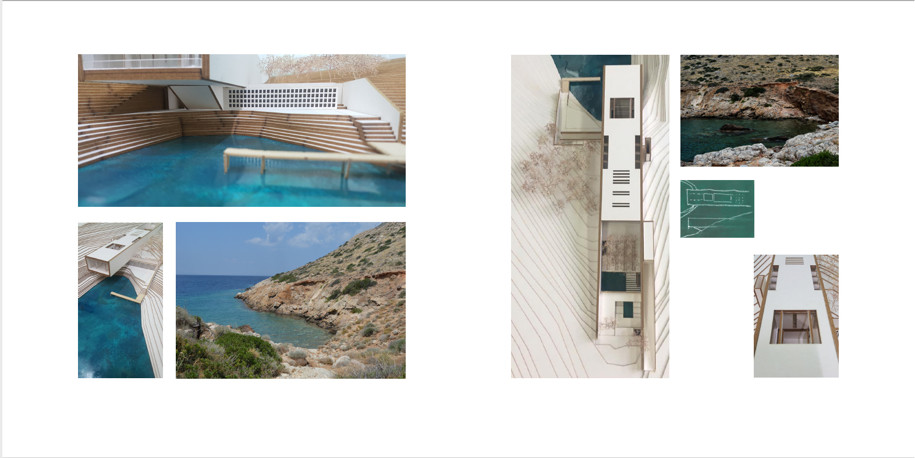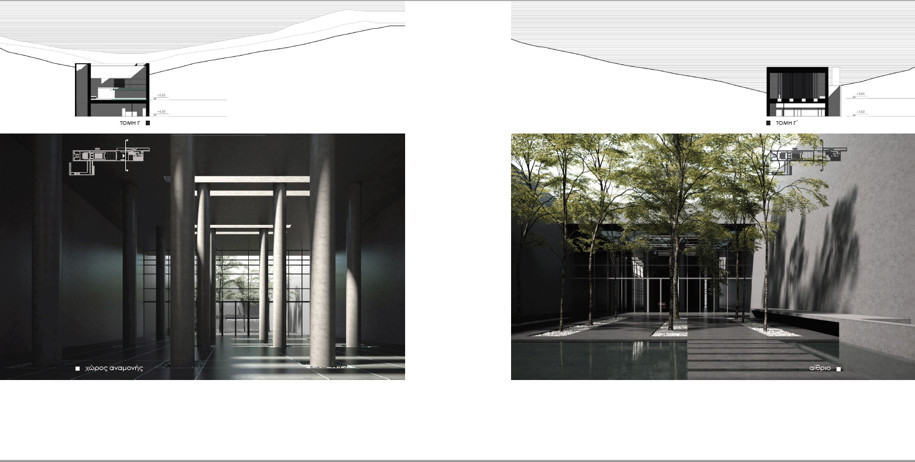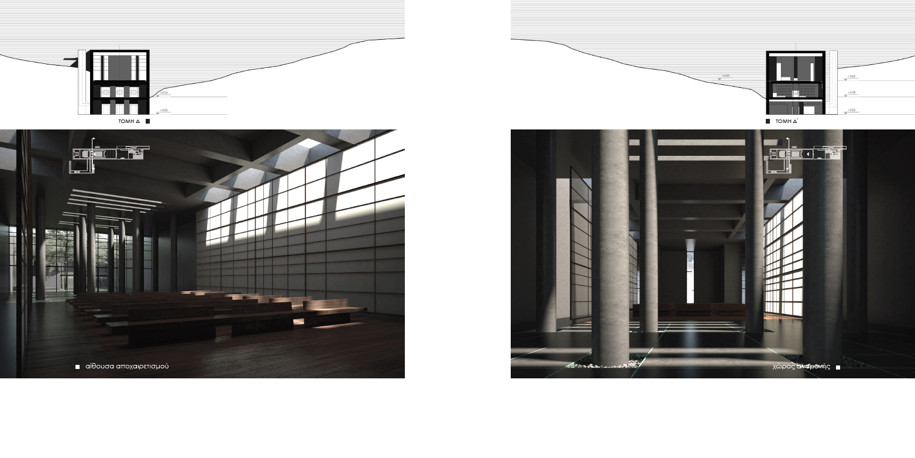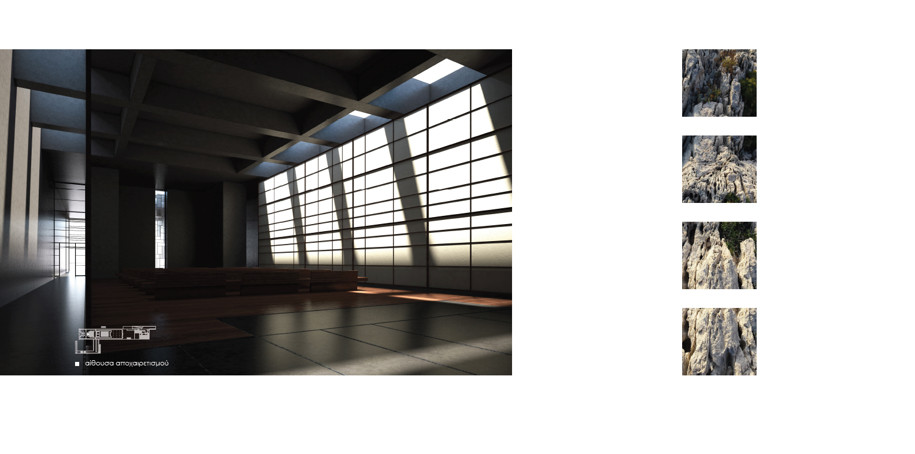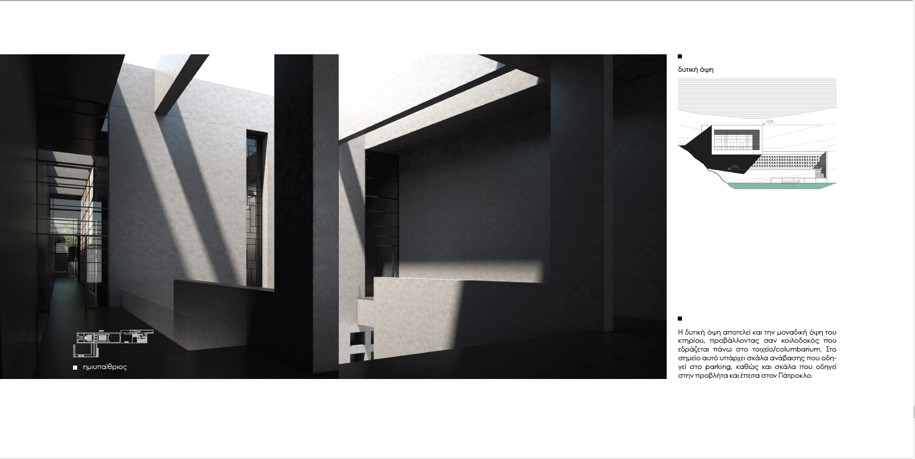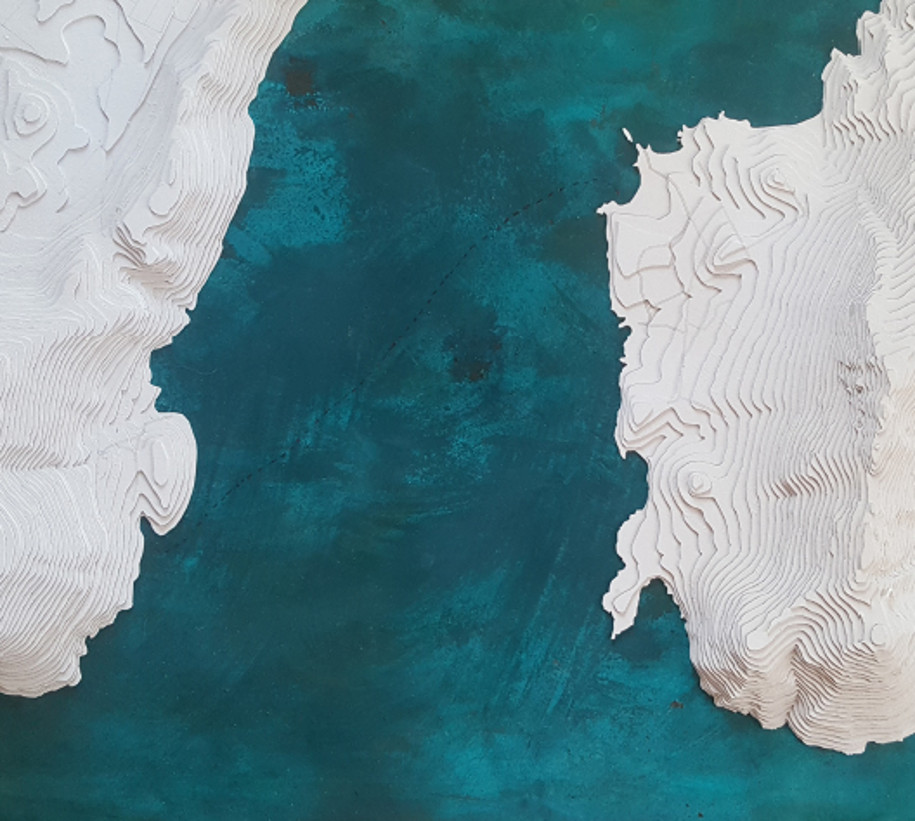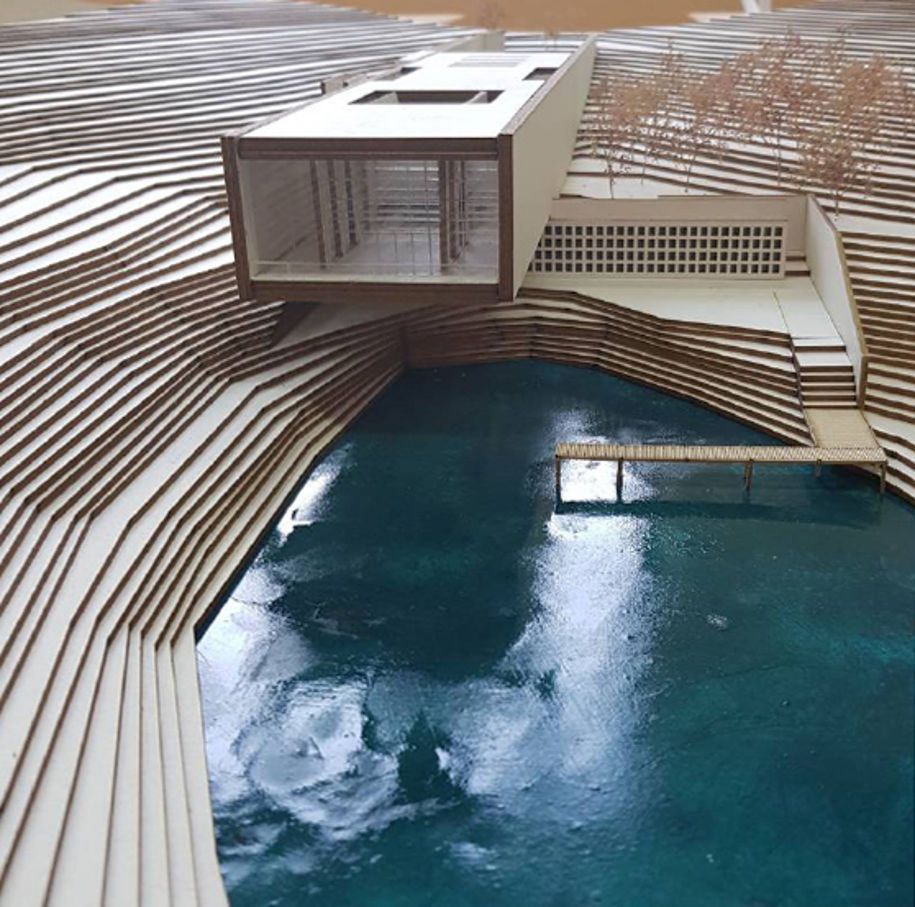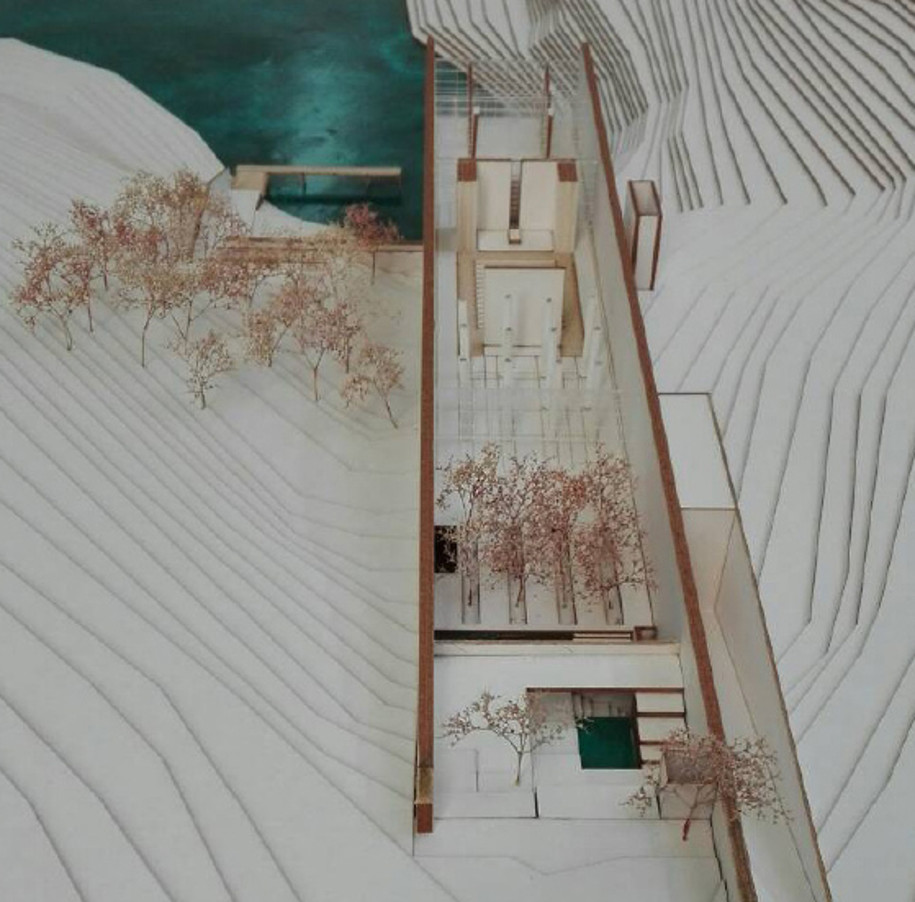Diploma thesis by Eva Lolou, entitled “A garden of farewells”, proposes the design of a crematorium in Attica. Thesis was presented in October 2018 at the Department of Architecture of NTUA and was supervised by Ioannis Zachariades.
–text by the author
This diploma thesis proposes the design of a crematorium in Attica, within both a conceptual and constructional approach. Furthermore, it proposes the transportation of the urns with the ashes of the deceased to the island of Patroclus as part of the synthetic idea.
As a result of my research of how people in different parts of the world managed the loss of the beloved ones and how they dealt with the disposal of the deceased from ancient times to the present, I found that despite the different interpretations of the soul and the afterlife, there are some things which are common. Such are the strategically chosen site of the transition of the dead and the relationship with water that is also a border, operating both as a threshold and an element of purification. There are of course important differences in the perception of Death and consequently with the attitudes towards cremation, among Asian countries, that tend to be more of a spiritual nature than in the West.
From the above, it became clear to me that cremation is not a miasma and should not be considered an industrial and a “dirty” process. So, I am strongly opposed to the choice of an industrial site for a cremation center, as I do not believe it is the right place to make the transition or to offer farewell to the deceased since Death is neither a bureaucratic nor is it an industrial process.
Thus, by bringing together primary elements such as rock, vegetation, intense land contours, sea, light, air, contributing to the creation of a mystagogic, yet not religious, space I envisage a building/non-building, a garden within a garden.
My synthetic principles initially formed the delimitation of an isolated enclosed site within this location, creating an introverted interior. Thereafter, a significant descent, so that one can get through darkness to the light, ending in the sea, which stands for the stage of redemption. The whole composition, until this point, is articulated by having the deceased follow a strict rythmic grid, so that symmetry and an axial movement become dominant elements of the composition.
Lastly, I propose the passage of the urn to the island of Patroclus, that lies across from this place without a specific address between the settlements of Legrena and Thymari. But instead of being placed in just another cemetery, by the use of a biodegradable urn, a tree can be planted and be referred to as a mark for the deceased. A vivid reminder of this man and not yet another grave.
So the transition becomes also symbolic – the passage, across the sea, to the island bearing the name of the man whose funeral was the first written description of cremation by Homer – to a garden of remembrance.
Facts & Credits
Project title A garden of farewells
Student Eva Lolou
Date October 2018
Course Diploma Thesis
Supervisor Ioannis Zachariades
Consultants Penny Koutrolikou, Nikos Rossis
Institution Department of Architecture, NTUA
Η διπλωματική εργασία της Εύας Λώλου, με τίτλο “Ένας κήπος αποχαιρετισμών”, προτείνει τον σχεδιασμό ενός αποτεφρωτηρίου στην Αττική τόσο σε εννοιολογική όσο και κατασκευαστική προσέγγιση. Η εργασία παρουσιάστηκε τον Οκτώβριο του 2018 στο Τμήμα Αρχιτεκτόνων Μηχανικών του ΕΜΠ με επιβλέποντα καθηγητή τον Ιωάννη Ζαχαριάδη.
–κείμενο από την δημιουργό
Η διπλωματική αυτή προτείνει τον σχεδιασμό ενός αποτεφρωτηρίου στην Αττική, τόσο με εννοιολογική αλλά και κατασκευαστική προσέγγιση καθώς και το πέρασμα της στάχτης στην νήσο Πάτροκλο στα πλαίσια της συνθετικής ιδέας.
Έπειτα από προσωπική μου έρευνα για τον τρόπο διαχείρισης της απώλειας και των νεκρών από την αρχαιότητα μέχρι σήμερα, διαπίστωσα πως παρά τις διαφορετικές ερμηνείες περί ψυχής και την μετά θάνατο ζωή (ή και όχι), αποτελούσαν κοινά στοιχεία η ειδικά επιλεγμένη τοποθεσία μετάβασης του νεκρού και η άμεση σχέση με το νερό που λειτουργούσε σαν όριο/κατώφλι αλλά και στοιχείο εξαγνισμού. Σημαντικές είναι οι διαφορές που υπάρχουν ως προς την αντίληψη για την αποτέφρωση και κατ’ επέκταση την σχέση με τον θάνατο ανάμεσα στις Ασιατικές χώρες όπου αποτελεί περισσότερο πνευματική πρακτική, σε σχέση με την Δύση.
Από τα παραπάνω μου έγινε σαφές ότι η αποτέφρωση δεν αποτελεί μίασμα και δεν μπορεί να θεωρείται αποκλειστικά βιομηχανική και “βρώμικη” διαδικασία. Έτσι με βρίσκει αντίθετη η χωροθέτηση του σε βιομηχανική ζώνη, καθώς θεωρώ πως δεν είναι το κατάλληλο μέρος για να γίνει το πέρασμα ή για να αποχαιρετήσει η οικογένεια τον άνθρωπό της. Ο αποχωρισμός του θανάτου δεν είναι ούτε γραφειοκρατική διαχείριση ούτε βιομηχανική διαδικασία.
Έτσι η σύνθεση αρχέγονων στοιχείων όπως τα βράχια, η βλάστηση, οι έντονες ισοϋψείς, η θάλασσα, το φως, ο αέρας συντελούν στην δημιουργία ενός χώρου μυσταγωγικού που όμως δεν είναι θρησκευτικός. Οραματίζομαι ένα κτήριο/μη κτήριο, έναν κήπο μέσα σε ένα κήπο.
Συνθετικές αρχές μου αποτέλεσαν αρχικά η οριοθέτηση ενός απομονωμένου περίκλειστου τόπου μέσα σε έναν τόπο, δημιουργώντας εσωστρέφεια. Έπειτα η κατάβαση, ώστε να οδηγηθεί κανείς από το σκοτάδι στο φως καταλήγοντας στην θάλασσα που αποτελεί και την λύτρωση. Όλη η σύνθεση αρθρώνεται με βάση τον νεκρό ακολουθώντας έναν αυστηρό κάνναβο, όπου κυριαρχεί η συμμετρία και η αξονική κίνηση.
Τέλος, προτείνω το πέρασμα της στάχτης στην νήσο Πάτροκλο απέναντι από τον τόπο δίχως διεύθυνση ανάμεσα από τους οικισμούς των Λεγραινών και Θυμαριού. Όμως αντί να τοποθετηθεί σε ένα ακόμα νεκροταφείο, με την χρήση κάποιας βιοδιασπώμενης τεφροδόχου φυτεύεται ένα δέντρο και λειτουργεί ως σήμα. Μια ζωντανή θύμηση για αυτόν τον άνθρωπο που έφυγε και όχι ένα ακόμα μνήμα.
Έτσι η μετάβαση ολοκληρώνεται και συμβολικά. Με το πέρασμα, απέναντι, μέσω της θάλασσας, στο νησί που φέρει το όνομα του ανθρώπου που αποτέλεσε την πρώτη γραπτή περιγραφή αποτέφρωσης από τον Όμηρο, σε έναν δενδρόκηπο θύμησης.
Model – Μακέτα
Στοιχεία έργου
Τίτλος εργασίας Ένας κήπος αποχαιρετισμών
Φοιτήτρια Εύα Λώλου
Ημερομηνία Οκτώβριος 2018
Μάθημα Διπλωματική Εργασία
Επιβλέπων Ιωάννης Ζαχαριάδης
Σύμβουλοι Πέννυ Κουτρολίκου, Νίκος Ρώσσης
Πανεπιστήμιο Τμήμα Αρχιτεκτόνων Μηχανικών, ΕΜΠ
Διαβάστε την εργασία εδώ
See more student works, here!
Δείτε περισσότερες φοιτητικές εργασίες, εδώ!
READ ALSO: UMBRELLAS - from Picasso to kinetic architecture | Antony Verriopoulos
